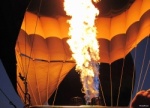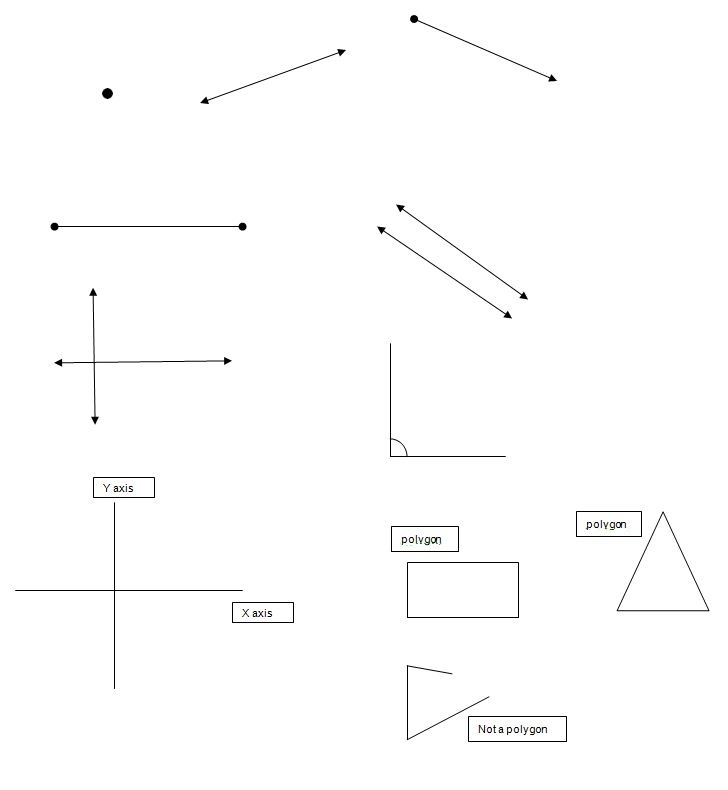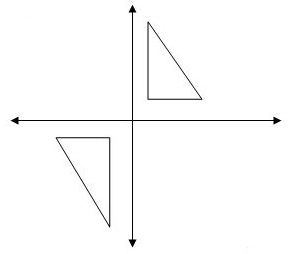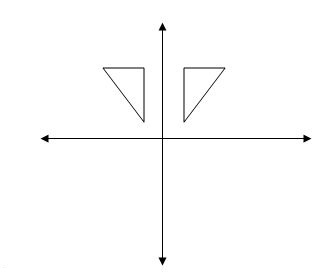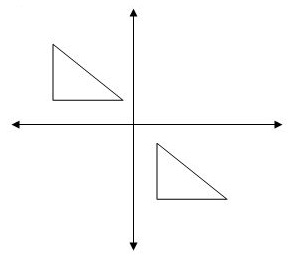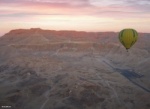Coordinate Plane Content Module
(→Middle and High School) |
|||
| (22 intermediate revisions by 2 users not shown) | |||
| Line 1: | Line 1: | ||
| + | {{BACK TO|[[Content Modules]]}} | ||
| + | |||
=Skills for Transformations in the Coordinate Plane= | =Skills for Transformations in the Coordinate Plane= | ||
| − | |||
==Elementary School== | ==Elementary School== | ||
| Line 12: | Line 13: | ||
* 5.GM.1c2 Locate points on a graph | * 5.GM.1c2 Locate points on a graph | ||
* 5.GM.1c3 Use order pairs to graph given points | * 5.GM.1c3 Use order pairs to graph given points | ||
| − | |||
==Middle School== | ==Middle School== | ||
| Line 25: | Line 25: | ||
* 8.GM.1f2 Identify a rotation, reflection, or translation of a plane figure when given coordinates | * 8.GM.1f2 Identify a rotation, reflection, or translation of a plane figure when given coordinates | ||
* 8.GM.1g1 Recognize congruent and similar figures | * 8.GM.1g1 Recognize congruent and similar figures | ||
| − | |||
==High School== | ==High School== | ||
| Line 34: | Line 33: | ||
| − | |||
| − | |||
| + | |||
| + | =Plot the Course= | ||
| + | [[File:Plotthecourse.jpg|thumb|x200px|link=http://www.worthwhilesmile.com/air-balloons-kaleidoscope/|http://www.worthwhilesmile.com/air-balloons-kaleidoscope/| three hot air balloons floating in the sky]] | ||
==The rationale== | ==The rationale== | ||
| Line 50: | Line 50: | ||
# Perform transformations in the coordinate plane | # Perform transformations in the coordinate plane | ||
# Apply transformations in the coordinate plane to real-world applications and activities | # Apply transformations in the coordinate plane to real-world applications and activities | ||
| + | |||
| + | |||
| + | |||
=Time for Take Off= | =Time for Take Off= | ||
| − | [[File:Timefortakeoff.jpg|thumb| | + | [[File:Timefortakeoff.jpg|thumb|A flame used to lift hot air balloon]] |
Understanding the vocabulary used within the coordinate plane is important for both teachers and students in planning and implementing math lessons. As a teacher, knowing and using the mathematical terms not only ensures your instruction stays true to the math content, but also will help with collaborating with other math teachers or content experts. When choosing which vocabulary to teach, it is most important that the teacher selects the most salient, important, or most frequently used vocabulary for each lesson. | Understanding the vocabulary used within the coordinate plane is important for both teachers and students in planning and implementing math lessons. As a teacher, knowing and using the mathematical terms not only ensures your instruction stays true to the math content, but also will help with collaborating with other math teachers or content experts. When choosing which vocabulary to teach, it is most important that the teacher selects the most salient, important, or most frequently used vocabulary for each lesson. | ||
| Line 59: | Line 62: | ||
==Elementary School== | ==Elementary School== | ||
| − | + | {{Def|Point |an exact location}} | |
| − | + | ||
| − | + | {{Def|Line |a straight path that extends forever}} | |
| − | + | ||
| − | + | {{Def|Line segment |part of a line with two endpoints}} | |
| − | + | ||
| − | + | {{Def|Ray |part of a line that starts at one endpoint and extends forever in one direction}} | |
| − | + | ||
| + | {{Def|Perpendicular |lines that intersect at a 90º angle}} | ||
| + | |||
| + | {{Def|Parallel |lines that never intersect}} | ||
| + | |||
| + | {{Def|Coordinate Plane |formed by two axes that intersect at a right angle}} | ||
| + | |||
| + | {{Def|Right angle |an angle that measures 90º formed by two perpendicular lines}} | ||
==Middle and High School== | ==Middle and High School== | ||
| − | + | {{Def|Polygon |closed plane figure made by three or more line segments}} | |
| − | + | ||
| − | + | {{Def|Rotation |when you turn a figure at one point}} | |
| − | + | ||
| − | + | {{Def|Reflection |a mirror image of an object when the original is flipped}} | |
| − | + | ||
| + | {{Def|Translation |when you slide a figure along a line without turning it}} | ||
| + | |||
| + | {{Def|Congruent figures |figures that have the same size and shape. If two polygons have the same corresponding sides and angles, they are congruent.}} | ||
| + | |||
| + | {{Def|Similar figures |figures with the same shape but not the same size}} | ||
| + | |||
==Idea to support vocabulary learning== | ==Idea to support vocabulary learning== | ||
* Have student match term with the correct picture | * Have student match term with the correct picture | ||
| − | [[File:Coordinate Plane1.jpg]] | + | [[File:Coordinate Plane1.jpg|alt=a point, a line, a ray, a line segment, parallel lines, perpendicular lines, right angle, coordinate plane, a three sided polygon, a four sided polygon, and a non polygon]] |
==Congruent Shapes== | ==Congruent Shapes== | ||
| Line 85: | Line 101: | ||
==Similar Shapes== | ==Similar Shapes== | ||
| − | |||
[[File:Coordinate Plane3.jpg|bottom|alt=Two similar squares, two similar parallelograms]] | [[File:Coordinate Plane3.jpg|bottom|alt=Two similar squares, two similar parallelograms]] | ||
| Line 100: | Line 115: | ||
'''Translation''' | '''Translation''' | ||
[[File:Coordinate Plane6.jpg|alt=Triangle translated diagonally across coordinate plane]] | [[File:Coordinate Plane6.jpg|alt=Triangle translated diagonally across coordinate plane]] | ||
| + | |||
| + | |||
| + | |||
=Floating on Air = | =Floating on Air = | ||
| − | [[File:Floatingonair.jpg|thumb| | + | [[File:Floatingonair.jpg|thumb|A close up of one hot air balloon with a second floating in the distance]] |
Before you can begin teaching students to use reflections, rotations, and translations of figures in the coordinate plane, you must have a deep understanding of these mathematical concepts. Some of these concepts may be familiar to you. Below is a list of skills that should be covered at each grade level in the mathematical strand of measurement. For more complicated concepts, please view the accompanying PowerPoint that will walk you through an example as well as make some suggestions for instruction. | Before you can begin teaching students to use reflections, rotations, and translations of figures in the coordinate plane, you must have a deep understanding of these mathematical concepts. Some of these concepts may be familiar to you. Below is a list of skills that should be covered at each grade level in the mathematical strand of measurement. For more complicated concepts, please view the accompanying PowerPoint that will walk you through an example as well as make some suggestions for instruction. | ||
| Line 112: | Line 130: | ||
* 5.GM.1j1 Recognize parallel and perpendicular lines within the context of two-dimensional figures | * 5.GM.1j1 Recognize parallel and perpendicular lines within the context of two-dimensional figures | ||
* 5.GM.1a1 Recognize properties of simple plane figures | * 5.GM.1a1 Recognize properties of simple plane figures | ||
| − | [[Media:Properties of Plane Figures. | + | :[[Media:Properties of Plane Figures.pptx| Properties of Plane Figures PowerPoint]] |
* 5.GM.1b1 Distinguish plane figures by their properties | * 5.GM.1b1 Distinguish plane figures by their properties | ||
* 5.GM.1c1 Locate the x and y axis on a graph | * 5.GM.1c1 Locate the x and y axis on a graph | ||
| Line 123: | Line 141: | ||
* 6.GM.1c5 Use order pairs to graph given points | * 6.GM.1c5 Use order pairs to graph given points | ||
* 6.GM.1c6 Find coordinate values of points in the context of a situation | * 6.GM.1c6 Find coordinate values of points in the context of a situation | ||
| − | [[Media:Graphing in the Coordinate Plane. | + | :[[Media:Graphing in the Coordinate Plane.pptx| Graphing in the Coordinate Plane PowerPoint]] |
* 6.GM.1c7 Use coordinate points to draw polygons | * 6.GM.1c7 Use coordinate points to draw polygons | ||
* 7.GM.1e Construct or draw plane figures using properties | * 7.GM.1e Construct or draw plane figures using properties | ||
* 8.GM.1f1 Recognize a rotation, reflection, or translation of a figure | * 8.GM.1f1 Recognize a rotation, reflection, or translation of a figure | ||
* 8.GM.1f2 Identify a rotation, reflection, or translation of a plane figure when given coordinates | * 8.GM.1f2 Identify a rotation, reflection, or translation of a plane figure when given coordinates | ||
| − | [ | + | :[[Media:Rotations in the Coordinate Plane.pptx| Rotations in the Coordinate Plane PowerPoint]] |
| − | [ | + | :[[Media:Reflections in the Coordinate Plane.pptx| Reflections in the Coordinate Plane PowerPoint]] |
| − | [ | + | :[[Media:Translations in the Coordinate Plane.pptx| Translations in the Coordinate Plane PowerPoint]] |
* 8.GM.1g Recognize congruent and similar figures | * 8.GM.1g Recognize congruent and similar figures | ||
Insert congruent vs. similar figures PowerPoint here | Insert congruent vs. similar figures PowerPoint here | ||
| Line 141: | Line 159: | ||
(See rotations, reflections, and translations PowerPoints) | (See rotations, reflections, and translations PowerPoints) | ||
* H.GM.1e Make formal geometric constructions with a variety of tools and methods | * H.GM.1e Make formal geometric constructions with a variety of tools and methods | ||
| + | |||
{|style = "border-style:dotted; color:blue; border-radius:5px;" | {|style = "border-style:dotted; color:blue; border-radius:5px;" | ||
| − | |||
||<span style="color:black;">'''Note:''' In high school transformations in the coordinate plane are presented within word problems and students must determine which transformations (e.g., rotations) need to be performed. Also in middle and high school, students are expected to perform combinations of transformations in the coordinate plane.</span> | ||<span style="color:black;">'''Note:''' In high school transformations in the coordinate plane are presented within word problems and students must determine which transformations (e.g., rotations) need to be performed. Also in middle and high school, students are expected to perform combinations of transformations in the coordinate plane.</span> | ||
|} | |} | ||
| + | |||
Great! Now that you have viewed the PowerPoints most useful to you, the next section will provide some ideas to consider when planning for universal design for learning | Great! Now that you have viewed the PowerPoints most useful to you, the next section will provide some ideas to consider when planning for universal design for learning | ||
| − | |||
| − | |||
| − | ==UNIVERSAL DESIGN FOR LEARNING | + | |
| + | =Sharing the Sky= | ||
| + | [[File:Sharethesky2.jpg|thumb|bottom|Two hot air balloons in the distance]] | ||
| + | <font size=3>UNIVERSAL DESIGN FOR LEARNING</font> | ||
| + | |||
{|border=1 | {|border=1 | ||
| − | |width = " | + | |width = "500"| |
| − | |width = " | + | |width = "500"|'''Visual Impairment or Deaf/Blind''' |
| − | |width = " | + | |width = "500"|'''Physical Impairment:''' |
'''Little/ No Hand Use''' | '''Little/ No Hand Use''' | ||
| − | |width = " | + | |width = "500"|'''Lacks Basic Numeracy Concepts''' |
| − | |width = " | + | |width = "500"|'''Motivational/ Attention Issues''' |
|- | |- | ||
| − | | | + | ||'''Representation''' |
| − | | | + | ||Use graphs and coordinate planes with raised lines and textures |
| − | | | + | ||Use computer representation of figures that can be manipulated with switch; create a grid (coordinate plane) on a large surface on the floor that the student can walk over or ride over in wheelchair to find ordered pairs |
| − | | | + | ||Color code equations and corresponding parts of a graphing calculator to support students correctly entering equations |
| − | | | + | ||Incorporate technology including computer representations, videos, animations, and talking calculators |
|- | |- | ||
| − | | | + | ||'''Expression''' |
| − | | | + | ||Student states answer or scans raised numbers to select correct answer; use voice output devices for student to select the correct answer |
| − | | | + | ||Student scans and selects points on a graph that represent ordered pairs; use a switch to indicate correct answers; use an eye gaze board to select answer; phrase questions so that they require a "yes/no" response, these can easily be answered using an eye gaze, head turn, two switches, etc. |
| − | | | + | ||Student selects graphs versus drawing them; selection of correct answer is done after a model; student answers "yes/no" questions regarding slope, quadrants, etc. |
| − | | | + | | rowspan=2|Have students create graphs using high interest manipulative (e.g. stickers for ordered pair coordinates) |
|- | |- | ||
| − | | | + | ||'''Engagement''' |
| − | | | + | ||Teach students to use their hands to scan the raised graph or parts of the coordinate plane |
| − | | | + | ||Use a computer with AT where the student can click to answer; use figures that are large enough to accommodate the movements that the student is able to make; pair student with another student without a physical impairment and have them work together |
| − | | | + | ||Student uses talking calculator and graphing calculator |
| − | |||
|} | |} | ||
| + | |||
| + | |||
| + | |||
=Prepare for Landing = | =Prepare for Landing = | ||
| − | [[File:Prepareforlanding.jpg|thumb| | + | [[File:Prepareforlanding.jpg|thumb|A hot air balloon in the distance preparing to land]] |
Below you will find ideas for linking graphing and transformations in the coordinate plane to real-world applications, the college and career readiness skills addressed by teaching these concepts, module assessments for elementary, middle school, and high school teachers, sample general education lesson plans incorporating Universal Design for Learning framework, blog for teachers to share their ideas, and a place to upload and share lesson plans from teachers who completed this module. | Below you will find ideas for linking graphing and transformations in the coordinate plane to real-world applications, the college and career readiness skills addressed by teaching these concepts, module assessments for elementary, middle school, and high school teachers, sample general education lesson plans incorporating Universal Design for Learning framework, blog for teachers to share their ideas, and a place to upload and share lesson plans from teachers who completed this module. | ||
Teaching a variety of strategies for using the coordinate plane may seem like a lot of work and developing creative, yet concrete demonstrations can be difficult. One way to help assist in a special educator's development within this curricular area is through collaboration with other teachers in your building. Often these skills are practiced outside of a math classroom in other curricular areas like art. Some activities with real world connection include: | Teaching a variety of strategies for using the coordinate plane may seem like a lot of work and developing creative, yet concrete demonstrations can be difficult. One way to help assist in a special educator's development within this curricular area is through collaboration with other teachers in your building. Often these skills are practiced outside of a math classroom in other curricular areas like art. Some activities with real world connection include: | ||
| Line 215: | Line 238: | ||
In addition to the real-world applications of these concepts, skills taught within this content module also promote the following college and career readiness skills. | In addition to the real-world applications of these concepts, skills taught within this content module also promote the following college and career readiness skills. | ||
| − | <u>Communicative competence: </u> | + | <u>Communicative competence:</u> |
Students will increase their vocabulary to include concepts related to "coordinate plane, rotations, reflections, and translations" In addition, they will be learning concepts such as: "up", "down", "left", "right", "positive", and "negative". | Students will increase their vocabulary to include concepts related to "coordinate plane, rotations, reflections, and translations" In addition, they will be learning concepts such as: "up", "down", "left", "right", "positive", and "negative". | ||
| Line 231: | Line 254: | ||
==Additional Resources== | ==Additional Resources== | ||
* [http://www.ncpublicschools.org/acre/standards/common-core-tools/#unpacking- http://www.ncpublicschools.org/acre/standards/common-core-tools/#unpacking] - this website provides an "unpacking document" for the Mathematics Common Core Standards that helps teachers identify what is most important and the essential skills for each standard | * [http://www.ncpublicschools.org/acre/standards/common-core-tools/#unpacking- http://www.ncpublicschools.org/acre/standards/common-core-tools/#unpacking] - this website provides an "unpacking document" for the Mathematics Common Core Standards that helps teachers identify what is most important and the essential skills for each standard | ||
| − | * [http://www.teachertube.com/ www.teachertube.com] - Youtube for teachers! Simply search for your content area and this website provides a variety of videos including videos of math experts working through math problems step by step ( | + | * [http://www.teachertube.com/ www.teachertube.com] - Youtube for teachers! Simply search for your content area and this website provides a variety of videos including videos of math experts working through math problems step by step ('''''free registration required)''''' |
| − | * [http://www.k8accesscenter.org/training_resources/math.asp http://www.k8accesscenter.org/training_resources/math.asp | + | * [http://www.k8accesscenter.org/training_resources/math.asp http://www.k8accesscenter.org/training_resources/math.asp] - this website not only provides some ideas and activities to use in your classroom, but also includes presentations and webinars from the North Carolina Department of Public Instruction about research-based strategies that have proven effective in teaching math for students with varying level of disability. |
* [http://exchange.smarttech.com/search.html?subject=Mathematics- http://exchange.smarttech.com/search.html?subject=Mathematics] - this SMART board exchange has developed lessons by classroom teachers differentiated by grade level. You can also search by skill and/or state standards. | * [http://exchange.smarttech.com/search.html?subject=Mathematics- http://exchange.smarttech.com/search.html?subject=Mathematics] - this SMART board exchange has developed lessons by classroom teachers differentiated by grade level. You can also search by skill and/or state standards. | ||
*[http://www.google.com/url?q=http://www.ksde.org/LinkClick.aspx%3Ffileticket%3DVq9AjrFFWzE%253D%26tabid%3D3763%26mid%3D11170&sa=U&ei=8lB3Try4CJOltwfmq5DfDA&ved=0CBIQFjAA&usg=AFQjCNE_DzuxI_rhYkU0H1qpjuqmM9sjng-- ksde.org] - this website provides a webinar about how to adapt materials for students who have visual impairments | *[http://www.google.com/url?q=http://www.ksde.org/LinkClick.aspx%3Ffileticket%3DVq9AjrFFWzE%253D%26tabid%3D3763%26mid%3D11170&sa=U&ei=8lB3Try4CJOltwfmq5DfDA&ved=0CBIQFjAA&usg=AFQjCNE_DzuxI_rhYkU0H1qpjuqmM9sjng-- ksde.org] - this website provides a webinar about how to adapt materials for students who have visual impairments | ||
| Line 242: | Line 265: | ||
Below are links to assessments for the purpose of self-checking your understanding of the content in this module. After answering the assessment questions, you may want to review the key to check your work. | Below are links to assessments for the purpose of self-checking your understanding of the content in this module. After answering the assessment questions, you may want to review the key to check your work. | ||
| − | [[Media:Coordinate Plane Elementary School Assessment.pdf|Elementary Assessment]] | + | :[[Media:Coordinate Plane Elementary School Assessment.pdf|Elementary Assessment pdf]] |
| − | [[Media:Coordinate Plane Elementary School Assessment Key.pdf|Elementary Assessment Key]] | + | :[[Media:Coordinate Plane Elementary School Assessment Key.pdf|Elementary Assessment Key pdf]] |
| − | [[Media:Coordinate Plane Middle and High School Assessment.pdf|Middle and High School Assessment | + | :[[Media:Coordinate Plane Middle and High School Assessment.pdf|Middle and High School Assessment pdf]] |
| − | + | ||
| − | + | ||
| + | :[[Media:Coordinate Plane Middle and High School Assessment Key.pdf|Middle and High School Assessment Key pdf]] | ||
| + | <!-- | ||
==Sample General Education Lesson Plans== | ==Sample General Education Lesson Plans== | ||
Insert developed lesson plans here | Insert developed lesson plans here | ||
| Line 258: | Line 281: | ||
==Teacher's Corner: Blog with other teachers== | ==Teacher's Corner: Blog with other teachers== | ||
| − | + | Insert forum or blog for teachers to share ideas | |
| + | --> | ||
| + | <!-- | ||
[[File:Upforachallenge.JPG|500px|center|Up for a Challenge]] | [[File:Upforachallenge.JPG|500px|center|Up for a Challenge]] | ||
| − | |||
| − | |||
| − | |||
Adapt the following general education lesson plan; adapt, and upload. These lesson plans may be shared with higher education professionals developing strategies to provide meaningful academic instruction in mathematics to students with severe disabilities. | Adapt the following general education lesson plan; adapt, and upload. These lesson plans may be shared with higher education professionals developing strategies to provide meaningful academic instruction in mathematics to students with severe disabilities. | ||
| − | Insert blank lesson plan form with UDL chart here | + | Insert blank lesson plan form with UDL chart here --> |
| − | Insert link for teachers to upload lesson plans | + | <!-- Insert link for teachers to upload lesson plans --> |
| − | |||
| − | [[Category: | + | [[Category: Content Modules]] |
| + | [[Category: Math]] | ||
Latest revision as of 12:32, 9 September 2015
BACK TO Content Modules
Contents |
[edit] Skills for Transformations in the Coordinate Plane
[edit] Elementary School
- 4.GM.1j1 Recognize a point, line and line segments, rays in two-dimensional figures
- 4.GM.1j2 Recognize perpendicular and parallel lines in two-dimensional figures
- 5.GM.1j1 Recognize parallel and perpendicular lines within the context of two-dimensional figures
- 5.GM.1a1 Recognize properties of simple plane figures
- 5.GM.1b1 Distinguish plane figures by their properties
- 5.GM.1c1 Locate the x and y axis on a graph
- 5.GM.1c2 Locate points on a graph
- 5.GM.1c3 Use order pairs to graph given points
[edit] Middle School
- 6.GM.1c4 Locate points on a graph
- 6.GM.1c5 Use order pairs to graph given points
- 6.GM.1c6 Find coordinate values of points in the context of a situation
- 6.GM.1c7 Use coordinate points to draw polygons
- 6.NO.1d5 Find given points between -10 and 10 on both axes of a coordinate plane
- 6.NO.1d6 Label points between -10 and 10 on both axes of coordinate plane
- 7.GM.1e1 Construct or draw plane figures using properties
- 8.GM.1f1 Recognize a rotation, reflection, or translation of a figure
- 8.GM.1f2 Identify a rotation, reflection, or translation of a plane figure when given coordinates
- 8.GM.1g1 Recognize congruent and similar figures
[edit] High School
- H.GM.1b1 Use definitions to demonstrate congruency and similarity in figures
- H.GM.1c1 Construct, draw, or recognize a figure after its rotation, reflection, or translation
- H.GM.1d1 Use the reflections, rotations, or translations in the coordinate plane to solve problems with right angles
- H.GM.1e1 Make formal geometric constructions with a variety of tools and methods
[edit] Plot the Course
[edit] The rationale
Understanding how to find points on a coordinate plane not only serve academic purposes, but also address real-life skills students may use on a daily basis like navigating using a map or an atlas. In addition to reading a map, the concept of graphing on the coordinate plane is also used in games such as Battleship or some of the simulation games in which students build amusement parks or entire cities. Other recreation leisure activities, especially in art, incorporate transformation in the coordinate plane like quilting. Mathematically, graphing in the coordinate plane is a prerequisite for many skills across grade bands such as transformations in the coordinate plane, finding missing attributes of polygons, and interpreting graphs.
[edit] Module Goal
The goal of this module is to provide detailed instructions on how to graph and create polygons in the coordinate plane as well as how to perform transformations (i.e., reflections, rotations, and translations) within the coordinate plane to teachers of students with disabilities at the elementary, middle, and high school level. This module promotes a mathematical understanding of these concepts so that a teacher can begin to plan how to teach the concepts to students. Additionally, this module will provide instructors with potential adaptations and modifications to consider when designing materials and instruction for students with severe disabilities.
[edit] Module Objectives
After viewing the content module, teachers will:
- Apply strategies for finding ordered pairs and graphing in the coordinate plane
- Identify attributes of polygons
- Perform transformations in the coordinate plane
- Apply transformations in the coordinate plane to real-world applications and activities
[edit] Time for Take Off
Understanding the vocabulary used within the coordinate plane is important for both teachers and students in planning and implementing math lessons. As a teacher, knowing and using the mathematical terms not only ensures your instruction stays true to the math content, but also will help with collaborating with other math teachers or content experts. When choosing which vocabulary to teach, it is most important that the teacher selects the most salient, important, or most frequently used vocabulary for each lesson. Below you will find a list of vocabulary included within this module. It may or may not be necessary to provide instruction for all terms as students may have learned them previously. If you are a secondary teacher and are not confident your students have been taught the elementary vocabulary terms, you may want to add those unknown terms to the focus and review of your lesson plan. While providing vocabulary instruction, you may consider including pictures or objects to make the instruction more concrete for students with disabilities (See Ideas to support vocabulary learning below).
[edit] Elementary School
- Point - an exact location
- Line - a straight path that extends forever
- Line segment - part of a line with two endpoints
- Ray - part of a line that starts at one endpoint and extends forever in one direction
- Perpendicular - lines that intersect at a 90º angle
- Parallel - lines that never intersect
- Coordinate Plane - formed by two axes that intersect at a right angle
- Right angle - an angle that measures 90º formed by two perpendicular lines
[edit] Middle and High School
- Polygon - closed plane figure made by three or more line segments
- Rotation - when you turn a figure at one point
- Reflection - a mirror image of an object when the original is flipped
- Translation - when you slide a figure along a line without turning it
- Congruent figures - figures that have the same size and shape. If two polygons have the same corresponding sides and angles, they are congruent.
- Similar figures - figures with the same shape but not the same size
[edit] Idea to support vocabulary learning
- Have student match term with the correct picture
[edit] Congruent Shapes
[edit] Similar Shapes
Idea for systematic instruction: demonstrate the concepts of congruent and similar shapes using examples and non-examples. For example: "This is ________, This is __________, This is NOT __________, This is NOT __________, This is ____________. Show me __________"
[edit] Floating on Air
Before you can begin teaching students to use reflections, rotations, and translations of figures in the coordinate plane, you must have a deep understanding of these mathematical concepts. Some of these concepts may be familiar to you. Below is a list of skills that should be covered at each grade level in the mathematical strand of measurement. For more complicated concepts, please view the accompanying PowerPoint that will walk you through an example as well as make some suggestions for instruction.
[edit] Elementary School
In elementary school skills include:
- 4.GM.1j1 Recognize a point, line and line segments, rays in two-dimensional figures
- 4.GM.1j2 Recognize perpendicular and parallel lines in two-dimensional figures
- 5.GM.1j1 Recognize parallel and perpendicular lines within the context of two-dimensional figures
- 5.GM.1a1 Recognize properties of simple plane figures
- 5.GM.1b1 Distinguish plane figures by their properties
- 5.GM.1c1 Locate the x and y axis on a graph
- 5.GM.1c2 Locate points on a graph
- 5.GM.1c3 Use order pairs to graph given points
[edit] Middle and High School
In middle school skills include:
- 6.GM.1c4 Locate points on a graph
- 6.GM.1c5 Use order pairs to graph given points
- 6.GM.1c6 Find coordinate values of points in the context of a situation
- 6.GM.1c7 Use coordinate points to draw polygons
- 7.GM.1e Construct or draw plane figures using properties
- 8.GM.1f1 Recognize a rotation, reflection, or translation of a figure
- 8.GM.1f2 Identify a rotation, reflection, or translation of a plane figure when given coordinates
- 8.GM.1g Recognize congruent and similar figures
Insert congruent vs. similar figures PowerPoint here
- H.GM.1b Use definitions to demonstrate congruency and similarity in figures
- H.GM.1c Construct, draw, or recognize a figure after its rotation, reflection, or translation
(See rotations, reflections, and translations PowerPoints)
- H.GM.1d Use the reflections, rotations, or translations in the coordinate plane to solve problems with right angles
(See rotations, reflections, and translations PowerPoints)
- H.GM.1e Make formal geometric constructions with a variety of tools and methods
| Note: In high school transformations in the coordinate plane are presented within word problems and students must determine which transformations (e.g., rotations) need to be performed. Also in middle and high school, students are expected to perform combinations of transformations in the coordinate plane. |
Great! Now that you have viewed the PowerPoints most useful to you, the next section will provide some ideas to consider when planning for universal design for learning
[edit] Sharing the Sky
UNIVERSAL DESIGN FOR LEARNING
| Visual Impairment or Deaf/Blind | Physical Impairment:
Little/ No Hand Use |
Lacks Basic Numeracy Concepts | Motivational/ Attention Issues | |
| Representation | Use graphs and coordinate planes with raised lines and textures | Use computer representation of figures that can be manipulated with switch; create a grid (coordinate plane) on a large surface on the floor that the student can walk over or ride over in wheelchair to find ordered pairs | Color code equations and corresponding parts of a graphing calculator to support students correctly entering equations | Incorporate technology including computer representations, videos, animations, and talking calculators |
| Expression | Student states answer or scans raised numbers to select correct answer; use voice output devices for student to select the correct answer | Student scans and selects points on a graph that represent ordered pairs; use a switch to indicate correct answers; use an eye gaze board to select answer; phrase questions so that they require a "yes/no" response, these can easily be answered using an eye gaze, head turn, two switches, etc. | Student selects graphs versus drawing them; selection of correct answer is done after a model; student answers "yes/no" questions regarding slope, quadrants, etc. | Have students create graphs using high interest manipulative (e.g. stickers for ordered pair coordinates) |
| Engagement | Teach students to use their hands to scan the raised graph or parts of the coordinate plane | Use a computer with AT where the student can click to answer; use figures that are large enough to accommodate the movements that the student is able to make; pair student with another student without a physical impairment and have them work together | Student uses talking calculator and graphing calculator |
[edit] Prepare for Landing
Below you will find ideas for linking graphing and transformations in the coordinate plane to real-world applications, the college and career readiness skills addressed by teaching these concepts, module assessments for elementary, middle school, and high school teachers, sample general education lesson plans incorporating Universal Design for Learning framework, blog for teachers to share their ideas, and a place to upload and share lesson plans from teachers who completed this module. Teaching a variety of strategies for using the coordinate plane may seem like a lot of work and developing creative, yet concrete demonstrations can be difficult. One way to help assist in a special educator's development within this curricular area is through collaboration with other teachers in your building. Often these skills are practiced outside of a math classroom in other curricular areas like art. Some activities with real world connection include:
- Make a snowflake reflection.
- When creating patterns, slides and flips are used by the Kuba people of the Congo (Zaire) region of Africa. Look at some samples of Kuba cloth.
- Take students outside and allow them to trace reflections of themselves using sidewalk chalk.
- Using construction and tissue paper, make a mock quilt using reflections, rotations, and transformation of different shapes (have different quilts for different polygons).
- Use amalgamations to make an art project.
- Cut a picture of a preferable object in half. Use the second half to demonstrate a reflection (putting the two sides together) and a rotation (put the pictures together with one side upside down).
- Use examples which incorporate home décor. For example, a student might have to use a reflection to show where the next picture should be hung on the wall to complete a grouping of pictures. Or, students may use the vocabulary terms like "rotate" to describe where to put furniture in a home decorating layout.
- Use a photo program and have students orient the pictures correctly.
In addition to the real-world applications of these concepts, skills taught within this content module also promote the following college and career readiness skills.
Communicative competence: Students will increase their vocabulary to include concepts related to "coordinate plane, rotations, reflections, and translations" In addition, they will be learning concepts such as: "up", "down", "left", "right", "positive", and "negative".
Fluency in reading, writing, and math: Students will have an opportunity to increase their numeracy and sight word fluency while participating in problem solving related to the "coordinate plane" such as number recognition, counting, and one-to-one correspondence.
Age appropriate social skills: Students will engage in peer groups to solve problems related to the coordinate plane that will provide practice on increasing reciprocal communication and age appropriate social interactions. For example, students might work together with their peers to find ordered pairs to graph the translation of a quadrilateral.
Independent work behaviors: By solving real life problems related to the coordinate plane, students will improve work behaviors that could lead to employment such as locating items on a map.
In addition to collaborating with other educational professionals in your building, the following list of resources may also help provide special educators with ideas for activities or support a more thorough understanding of the mathematical concepts presented in this content module
[edit] Additional Resources
- http://www.ncpublicschools.org/acre/standards/common-core-tools/#unpacking - this website provides an "unpacking document" for the Mathematics Common Core Standards that helps teachers identify what is most important and the essential skills for each standard
- www.teachertube.com - Youtube for teachers! Simply search for your content area and this website provides a variety of videos including videos of math experts working through math problems step by step (free registration required)
- http://www.k8accesscenter.org/training_resources/math.asp - this website not only provides some ideas and activities to use in your classroom, but also includes presentations and webinars from the North Carolina Department of Public Instruction about research-based strategies that have proven effective in teaching math for students with varying level of disability.
- http://exchange.smarttech.com/search.html?subject=Mathematics - this SMART board exchange has developed lessons by classroom teachers differentiated by grade level. You can also search by skill and/or state standards.
- ksde.org - this website provides a webinar about how to adapt materials for students who have visual impairments
- http://www.teachforever.com/2008/11/coordinate-plane-battleship-game-2008.html - website with a lesson plan for using battleship to practice finding ordered pairs in the coordinate plane
- http://funbasedlearning.com/ - website provides tutorials for graphing that range from easy to hard
- http://commoncoretools.wordpress.com/ - website provides explanation of common core connectors
[edit] Module Assessments
Below are links to assessments for the purpose of self-checking your understanding of the content in this module. After answering the assessment questions, you may want to review the key to check your work.

